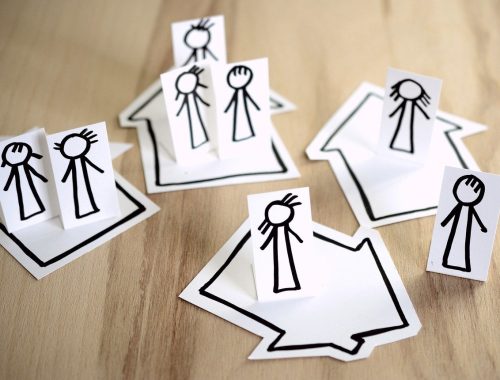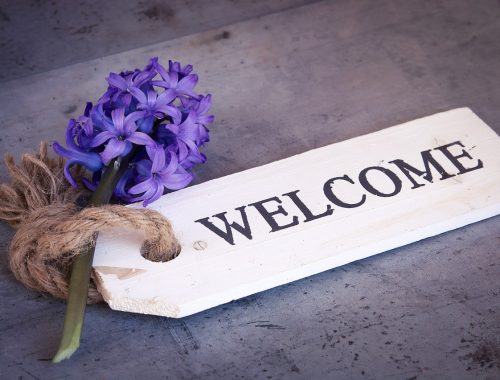
Gay parenting in different countries
The LGBTQ rights to raise children are finally – and after a long battle – being recognized in the United States. That doesn’t mean gay parents have it easy here, as the social stigma is still widespread, but at least the law recognizes them as capable of creating a family. How does the American reality compare to other countries? Where in the world does the LGBTQ community struggle the most when it comes to adoption and parenting?
Before we even start talking about parenting rights for gay couples, let’s take a look at where being queer is even allowed. Seriously? That’s right. There still are many countries that don’t even recognize sexual minorities as rightful citizens and where being gay means risking the death penalty.
The countries where it is illegal to be gay
As you may well guess, it is mainly the Muslim countries that have the strictest anti-LGBTQ laws. Same-sex activity is considered a capital offense and punished by the death penalty in:
- Afghanistan
- Qatar
- Saudi Arabia
- Iran
- Pakistan
- Somalia
- Sudan
- Yemen
- Mauritania
In total, there are over 60 countries that in some way criminalize the LGBTQ community, most of them in Africa, South East Asia, and the Arabian Peninsula.
Does it mean that the rest of the world embraces gay rights as humans and parents? Far from it. Countries like Russia and China may well allow sexual minorities to stay out of prison for the sheer fact of being “different”, but the social stigma, as well as the governmental barriers and propaganda against the LGBTQ movement, are too powerful to overcome.
The countries that have legalized same-sex marriage
As you can see, being gay in most of Asia and Africa is a living hell. In comparison, the United States is much more progressive and tolerant. It actually finds itself among those few other nations that have legalized gay marriage quite early on.
Yet, we are not the ones who paved the way. The absolute pioneer in this aspect has been a relatively small country in western Europe well-known for its progressive laws and social tolerance: the Netherlands. As early as the year 2000, the Dutch Parliament gave same-sex couples the right to marry, divorce, and adopt children.
Among the countries that followed were:
- Belgium (2003)
- Canada and Spain (2005)
- South Africa (2006)
- Norway (2008)
- Sweden (2009)
- Iceland, Portugal, Argentina (2010)
- Denmark (2012)
- Uruguay, New Zealand, France, Brazil, England, Wales (2013)
- Scotland, Luxembourg (2014)
- Finland, Ireland, Greenland, and the United States (2015)
To date, there are 30 countries and territories that allow gays and lesbians to marry and have children, most of them in the Americas and Europe. South American Chile where same-sex marriage is allowed as of recently, is a particularly interesting case:
Don’t think, however, that being gay in those 30 countries is as easy as being straight, as only 11 of them actually offer constitutional protection against any form of sexual discrimination (Mexico, Ecuador, Bolivia, Cuba, Malta, San Marino, Sweden, Portugal, Fiji, Nepal, and South Africa).
The LGBTQ community around the world and their rights to adopt
As per the 2020 ILGA (The International Lesbian, Gay, Bisexual, Trans and Intersex Association) Homophobia Report, only 14% of 193 United Nations member states have until now fully recognized the right of same-sex couples to find a family and to jointly adopt. Most of them still require those couples to be legally married.
What does that mean for US gay and lesbian couples? Seeking to adopt internationally in countries like Russia or China – which many of those couples used to rely on – is nowadays turning out even more challenging than adopting in their own country. The only three nations that allow LGBTQ adoption for foreigners are Brazil, Colombia, and the Philippines.
Same-sex adoption rights in the USA vs The Netherlands
Now, what if we compare the adoption process that same-sex couples need to face in the US with – let’s say – the famously open-minded Netherlands?
According to Dutch law, couples (gay or straight) who look to adopt don’t have to be married but they must have lived together for at least three years. International adoption and “marriage tourism” are not allowed.
In the US, on the other hand, adoption for same-sex couples has been legal in all the states as of 2017. Of almost 600 thousand gay and lesbian households in the country, 115,000 have children. The latest statistics show that 4% of adopted children and 3 percent of foster children are raised by same-sex couples with 2 million more LGBTQ community members interested in adopting.
As for the adoption process itself, it is virtually the same as for straight couples. The legal requirements vary from state to state, the only consistent one is being at least 21 years old.
In California, for instance, the basic requirements to adopt are as follows:
| Code Section | Family §§8500-9340s |
| Who May Be Adopted | Any unmarried minor child at least 10 years younger than their prospective adoptive parent or parents; any married minor or adult |
| Age that Child’s Consent Needed | 12 years and older |
| Who May Adopt | Any adult: must be 10 years older than child unless stepparent, sister, brother, aunt, uncle, or first cousin and court approves |
| Home Residency Required Prior to Finalization of Adoption? | No |
| State Agency/Court | State Department of Social Services/Superior |
| Statute of Limitations to Challenge | On any grounds except fraud: 1 year; fraud: 3 years |
There are still large parts of the world where sexual minorities struggle with social stigma and homophobic legislation that may even pose a threat to their life. In comparison, the reality of the LGBTQ community in the US – although far from perfect – seems much more “livable”. Only a handful of other countries allow gay couples to adopt, something that all of the 50 American states have already legalized.
You May Also Like

A look at an LGBTQ family through the years
March 17, 2022
Welcome to LGBTQ Parenting Connection!
February 5, 2022

